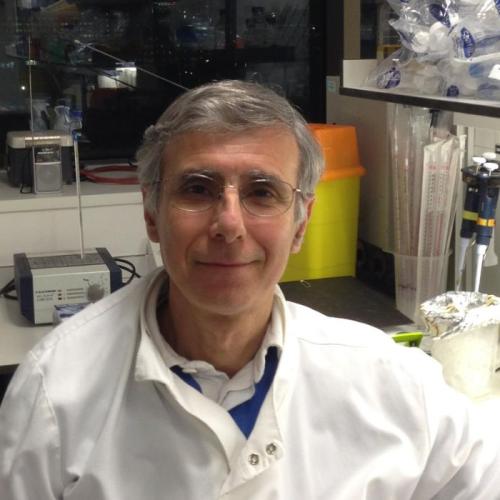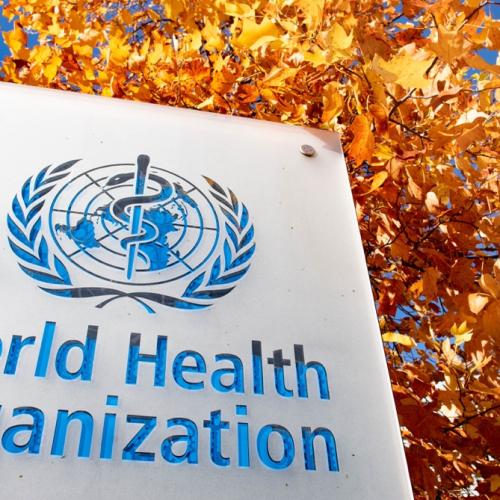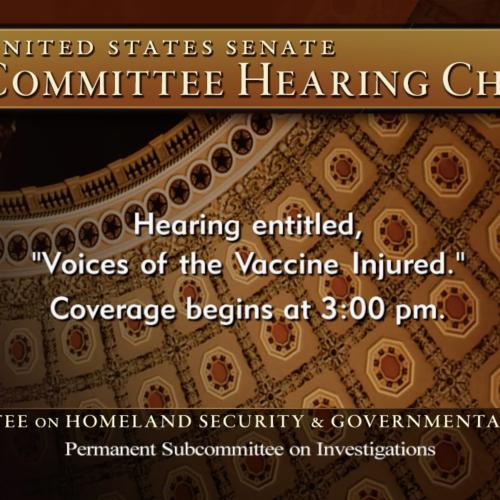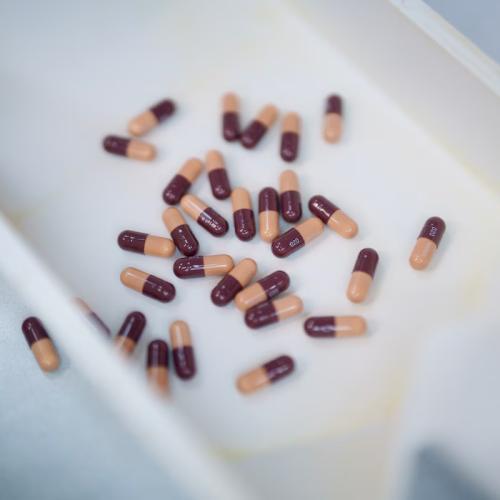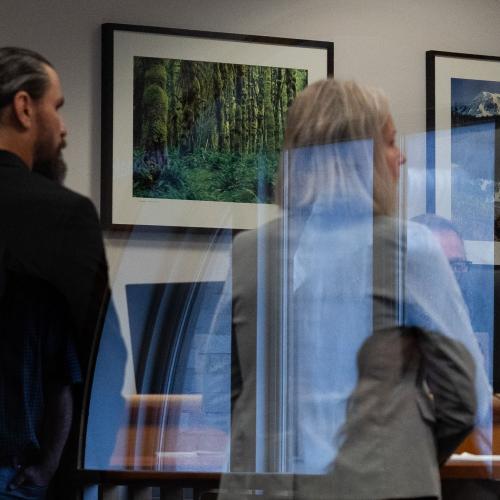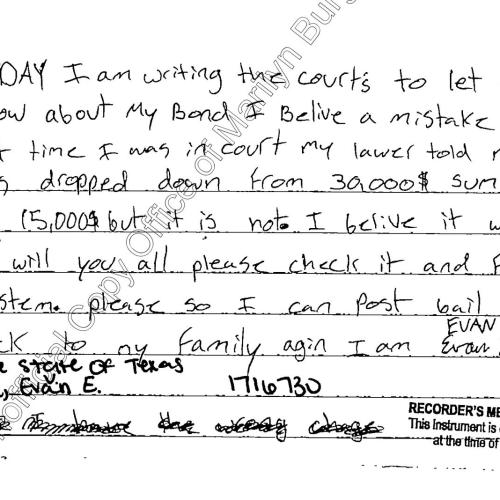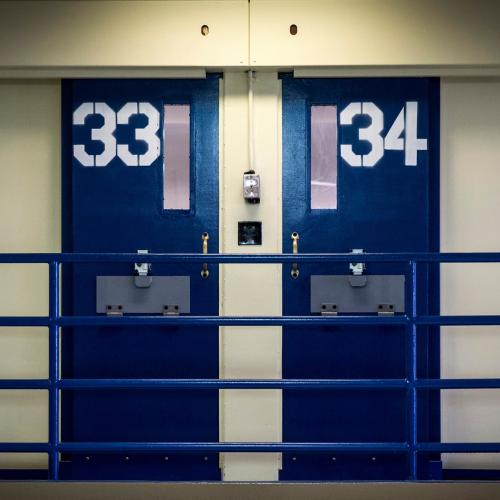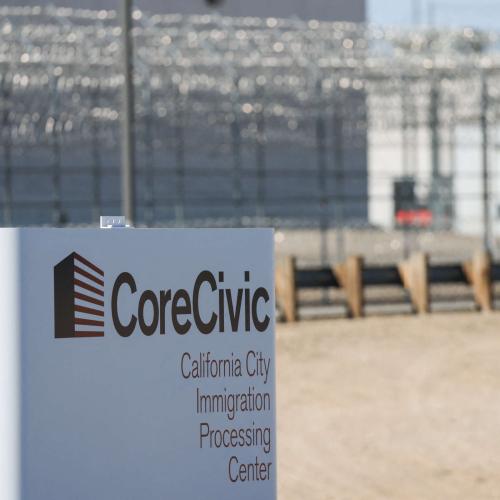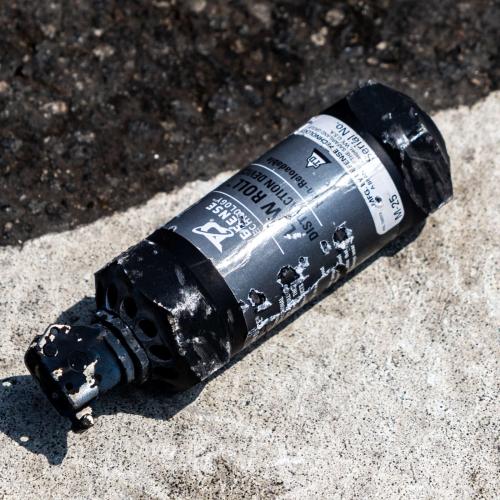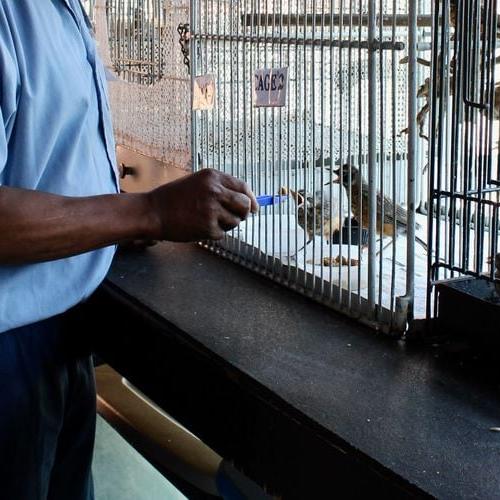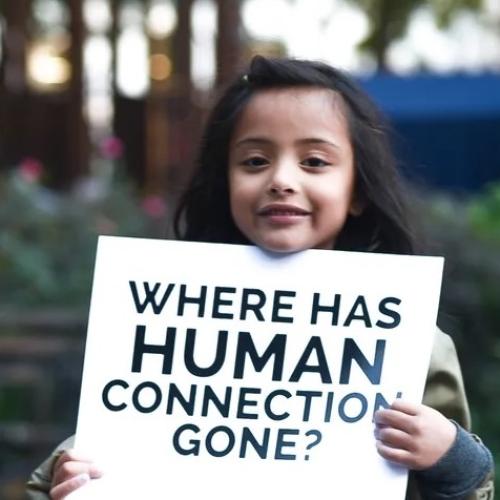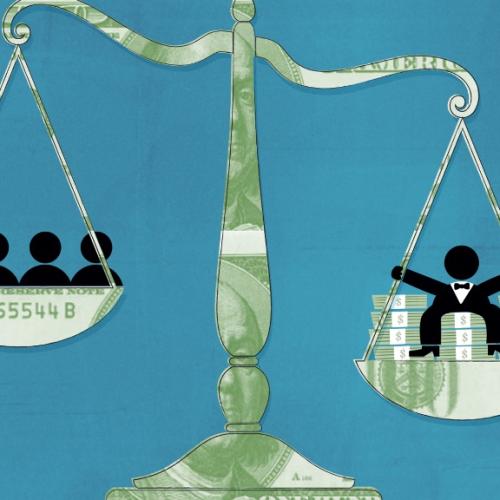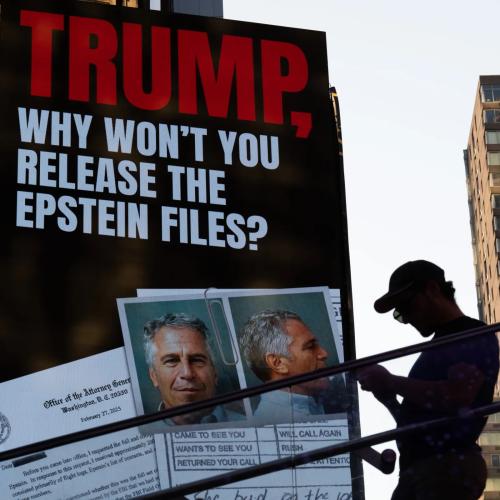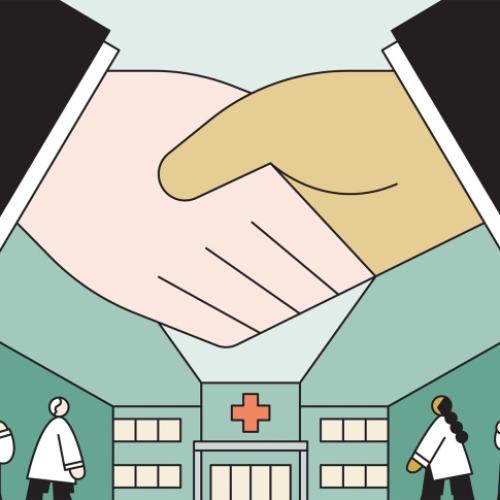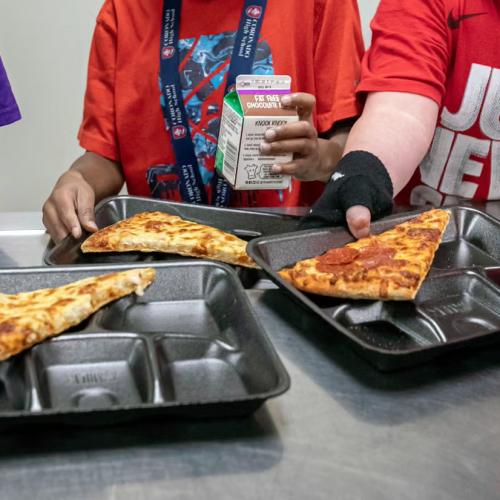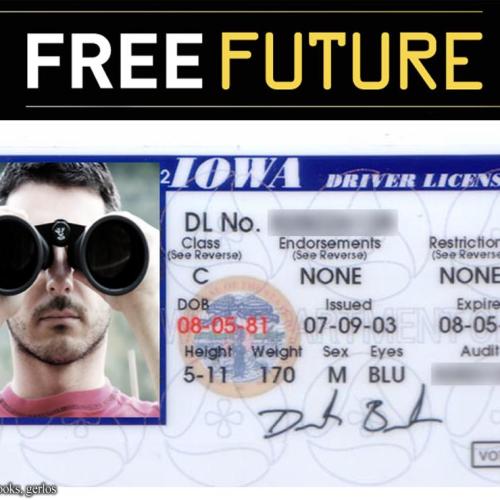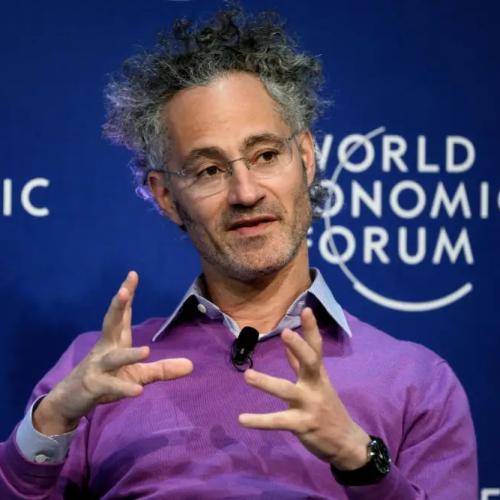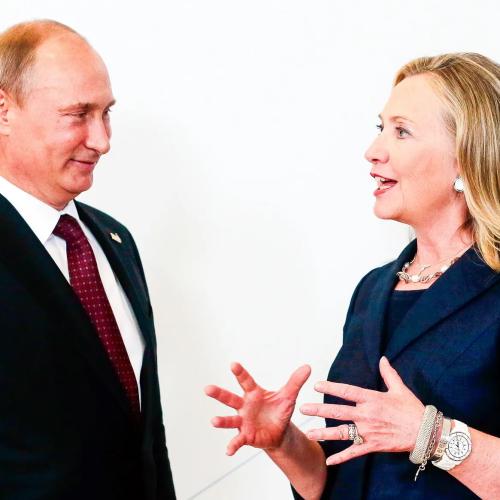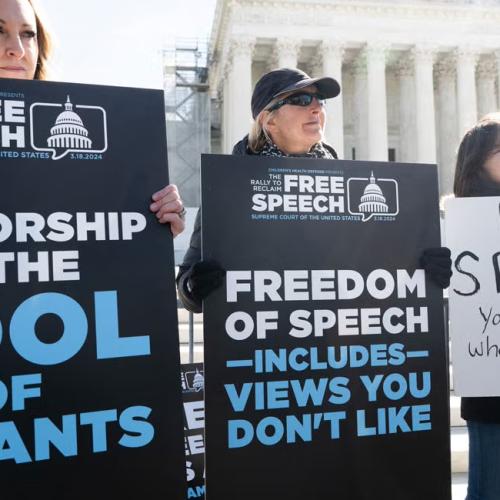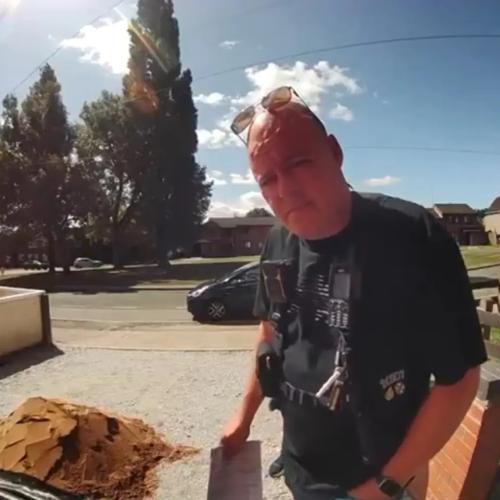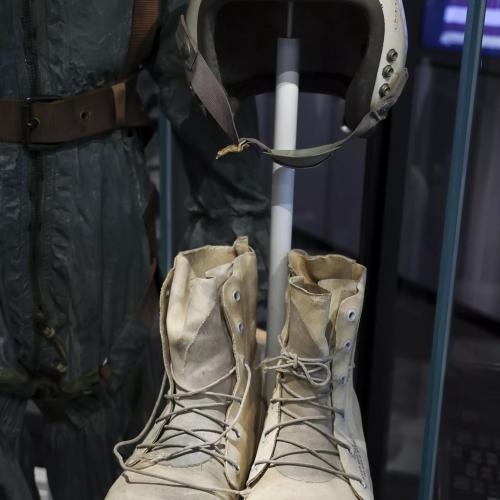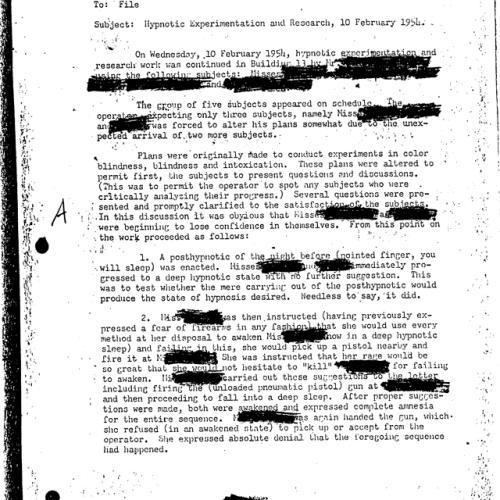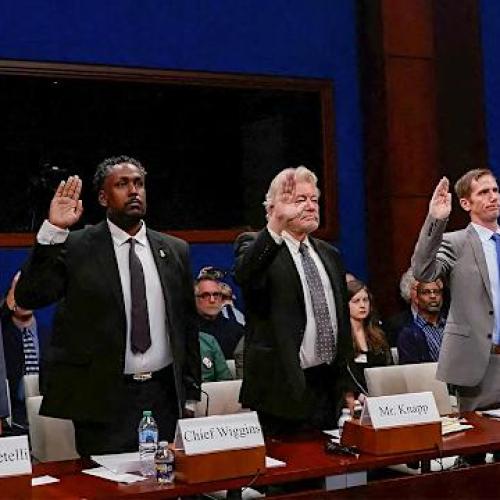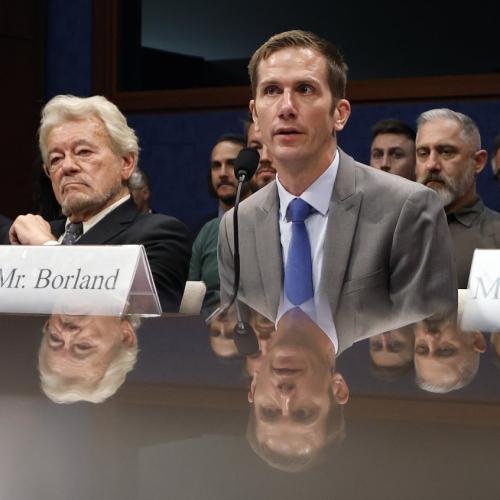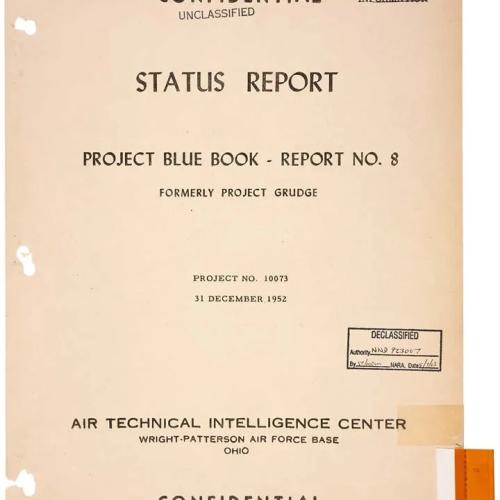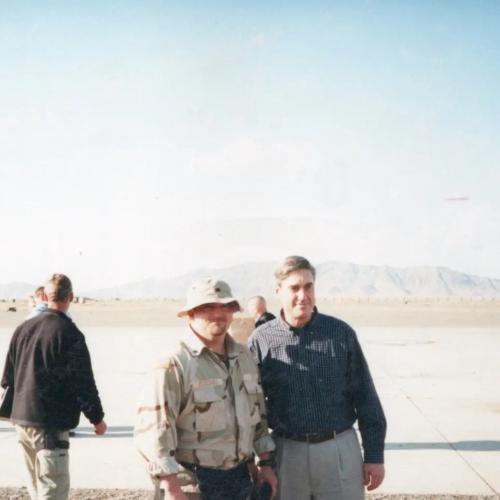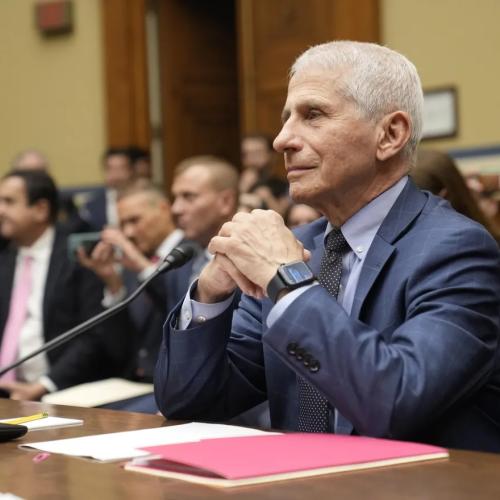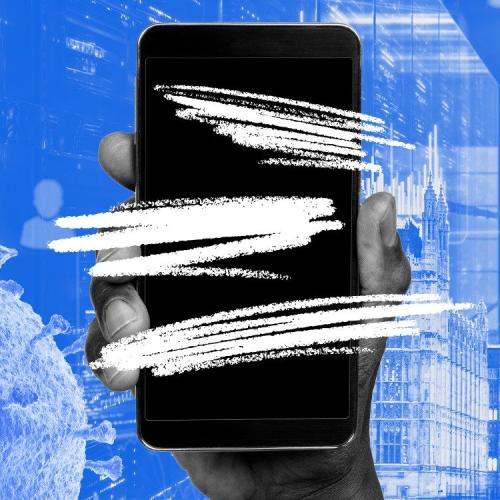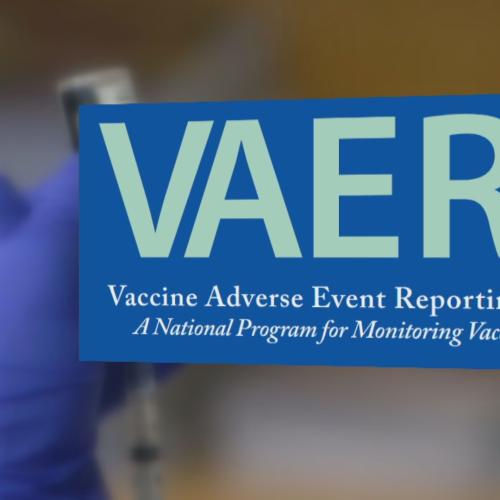Media Articles
Below are key excerpts of revealing news articles from reliable news media sources. If any link fails to function, a paywall blocks full access, or the article is no longer available, try these digital tools.
For further exploration, delve into our comprehensive Information Centers.
Deflecting the sun to fight climate change could trigger droughts and hurricanes, the Royal Society has warned. In a new report, experts argued solar radiation modification (SRM) could reduce global temperatures but “worsen rather than ease” climate change and make the sky look less blue. In May, the Government’s Advanced Research and Invention Agency (Aria) announced £56.8m for 21 “climate cooling” projects, which include injecting aerosols into the sky to reflect sunlight away from Earth. However, the report found there were “major uncertainties” and argued the plan may have devastating knock-on effects, particularly if deployed by rogue groups. Prof Jim Haywood, of atmospheric science at the University of Exeter, said: “What you do in one place can cause climate change in a different place. “Stratospheric aerosol injection deployment in the northern hemisphere could impact the position of the tropical monsoon and lead to droughts in sub-Saharan Africa. “Everyone there relies on subsistence farming, so it quickly devastates if there is a drought there. “In the southern hemisphere, it could lead to an increase in North Atlantic hurricane frequency and intensity, it could lead to winter droughts over the Mediterranean and the Iberian Peninsula.” A “termination effect” whereby sun dimming technology was suddenly stopped, could also lead to rapid warming of up to 2C in decades, and cause devastating effects for ecosystems.
Note: Modifying the atmosphere to dim the sun involves catastrophic risks. Regenerative farming is far safer and more promising for stabilizing the climate. In our latest Substack, "Geoengineering is a Weapon That's Been Rebranded as Climate Science. There's a Better Way To Heal the Earth," we present credible evidence and current information showing that weather modification technologies are not only real, but that they are being secretly propagated by multiple groups with differing agendas.
As scientists who have worked on the science of solar geoengineering for decades, we have grown increasingly concerned about the emerging efforts to start and fund private companies to build and deploy technologies that could alter the climate of the planet. The basic idea behind solar geoengineering, or what we now prefer to call sunlight reflection methods (SRM), is that humans might reduce climate change by making the Earth a bit more reflective, partially counteracting the warming caused by the accumulation of greenhouse gases. Many people already distrust the idea of engineering the atmosphere—at whichever scale—to address climate change, fearing negative side effects, inequitable impacts on different parts of the world, or the prospect that a world expecting such solutions will feel less pressure to address the root causes of climate change. Notably, Stardust says on its website that it has developed novel particles that can be injected into the atmosphere to reflect away more sunlight, asserting that they’re “chemically inert in the stratosphere, and safe for humans and ecosystems.” But it’s nonsense for the company to claim they can make particles that are inert in the stratosphere. Even diamonds, which are extraordinarily nonreactive, would alter stratospheric chemistry. Any particle may become coated by background sulfuric acid in the stratosphere. That could accelerate the loss of the protective ozone layer.
Note: Modifying the atmosphere to dim the sun involves catastrophic risks. Regenerative farming is far safer and more promising for stabilizing the climate. In our latest Substack, "Geoengineering is a Weapon That's Been Rebranded as Climate Science. There's a Better Way To Heal the Earth," we present credible evidence and current information showing that weather modification technologies are not only real, but that they are being secretly propagated by multiple groups with differing agendas.
The latest figures and the statistical yearbook "The World of Organic Agriculture" was presented on 11 February 2025 at BIOFACH, the world's leading trade fair for organic food in Nuremberg. The global organic farming area increased by 2.5 million hectares in 2023, reaching almost 99 million hectares. The sales of organic food reached nearly 136 billion euros in 2023. The 26th edition of the yearbook "The World of Organic Agriculture", jointly published by FiBL and IFOAM – Organics International, shows that the growth in area and number of farms in 2023 exceeded that of previous years, particularly due to increases in Latin America. Data were provided by 188 countries. By the end of 2023, 98.9 million hectares were managed organically, marking a 2.6 percent increase (+2.5 million hectares) from 2022. Latin America experienced the largest increase, adding 1 million hectares (10.8 percent growth), while Africa recorded the highest relative growth, expanding by 24 percent to reach 3.4 million hectares. Oceania remains the leading region for organic farming, with 53.2 million hectares, accounting for more than half of the global organic area. It is followed by Europe, which has 19.5 million hectares, and Latin America, with 10.3 million hectares. By country, Australia leads with 53 million hectares, followed by India (4.5 million hectares) and Argentina (4 million hectares). There are notable increases observed in Vietnam, Sri Lanka, and Burkina Faso.
Note: Don't miss this global organic agriculture graphic. Explore more positive stories like this on healing our bodies and healing the Earth.
The CIA experienced “as many failures as successes” in exploring the intelligence applications of LSD and other drugs, according to the October 1975 U.S. Senate testimony of the Agency’s former top chemist, Sidney Gottlieb, the man most closely associated with the notorious MKULTRA behavior control research projects. The long-secret transcripts of Gottlieb’s testimony to the staff of the United States Select Committee to Study Governmental Operations with Respect to Intelligence Activities (“Church Committee”) were published today by the National Security Archive, 50 years after the historic intelligence oversight hearings, along with a selection of declassified CIA memos and other records concerning MKULTRA. The Church Committee transcripts are among the highlights of the Digital National Security Archive collection, CIA and the Behavioral Sciences: Mind Control, Drug Experiments and MKULTRA. Gottlieb was a key bureaucratic player who signed off on hundreds of MKULTRA subprojects and who developed clandestine relationships with universities, prisons, hospitals, private laboratories, and private foundations that made it difficult to trace the programs back to the Agency. The Church Committee faced considerable obstacles in reconstructing the story, especially since Gottlieb and CIA director Richard Helms destroyed most of the original project records in 1973.
Note: According to Gottlieb's testimony, the CIA covertly dosed an unwitting individual with a massive amount of LSD to deliberately induce psychosis, causing him to experience violent paranoia and leading an unsuspecting psychiatrist to declare him mentally ill. This was done explicitly to discredit the man in the eyes of his colleagues—a tactic deemed as operationally useful for destroying a person’s credibility without ever touching them. Learn more about the MKUltra Program in our comprehensive Military-Intelligence Corruption Information Center.
Local cops have gotten tens of millions of dollars’ worth of discounted military gear under a secretive federal program that is poised to grow under recent executive action. The 1122 program ... presents a danger to people facing off against militarized cops, according to Women for Weapons Trade Transparency. “All of these things combined serve as a threat to free speech, an intimidation tactic to protest,” said Lillian Mauldin, the co-founder of the nonprofit group, which produced the report released this week. The federal government’s 1033 program ... has long sent surplus gear like mine-resistant vehicles and bayonets to local police. Since 1994, however, the even more obscure 1122 program has allowed local cops to purchase everything from uniforms to riot shields at federal government rates. The program turns the feds into purchasing agents for local police. Local cops have used the program to pick up 16 Lenco BearCats, fearsome-looking armored police vehicles. Those vehicles represented 4.8 percent of the total spending identified in the ... report. Surveillance gear and software represented another 6.4 percent, and weapons or riot gear represented 5 percent. One agency bought a $428,000 Star Safire thermal imaging system, the kind used in military helicopters. The Texas Department of Public Safety’s intelligence and counterterrorism unit purchased a $1.5 million surveillance software license. Another agency bought an $89,000 covert camera system.
Note: Read more about the Pentagon's 1033 program. For more along these lines, read our concise summaries of news articles on police corruption and the erosion of civil liberties.
While Defense Secretary Pete Hegseth obsesses over the supposed “softening” and “weakening” of American troops, the Pentagon is concealing the scale of a real threat to the lives of his military’s active-duty members: a suicide crisis killing hundreds of members of the U.S. Air Force. Data The Intercept obtained via the Freedom of Information Act shows that of the 2,278 active-duty Air Force deaths between 2010 and 2023, 926 — about 41 percent — were suicides, overdoses, or preventable deaths from high-risk behavior in a decade when combat deaths were minimal. This is the first published detailed breakdown of Air Force suicide data. In 2022, the National Defense Authorization Act mandated the Defense Department to report suicides by year, career field, and duty status, but neither the department nor the Air Force complied. Congress has done little to enforce thorough reporting. From 2010 to 2023, active-duty maintainers had a suicide rate of 27.4 per 100,000 personnel, nearly twice the 14.2 per 100,000 among U.S. civilians — a 1.93 times higher risk. FOIA records show the most common methods were self-inflicted gunshot wounds to the head and hanging. Other methods included sodium nitrite ingestion, helium inhalation, and carbon monoxide poisoning. [The dataset] shows a troubling pattern of preventable deaths that leaders at the senior officer level or above minimized or ignored, often claiming that releasing detailed suicide information would pose a risk to national security. Current and former service members described a fear of bullying, hazing, and professional retaliation for seeking mental health treatment.
Note: Read about the tragic traumas and suicides connected to military drone operators. A recent Pentagon study concluded that US soldiers are nine times more likely to die by suicide than they are in combat. For more along these lines, read our concise summaries of news articles on mental health and military corruption.
President Trump is rattling his saber against Colombian President Gustavo Petro to punish him for accusing the U.S. government of murdering Venezuelan fishermen. Trump warned that Petro that he “better close up” cocaine production “or the United States will close them up for him, and it won’t be done nicely.” Is anyone in the Trump White House aware of the long history of U.S. failure in that part of the world? Colombia remains the world’s largest cocaine producer despite billions of dollars of U.S. government anti-drug aid to the Colombian government. The Clinton administration made Colombia its top target in its international war on drugs. Clinton drug warriors deluged the Colombian government with U.S. tax dollars to deluge Colombia with toxic spray. The New York Times reported that U.S.-financed planes repeatedly sprayed pesticides onto schoolchildren, making many of them ill. At the same time that the Clinton administration was sacrificing the health of Colombian children in its quixotic anti-drug crusade ... Laurie Hiett, the wife of Colonel James Hiett, the top U.S. military commander in Colombia, exploited U.S. embassy diplomatic pouches to ship 15 pounds of heroin and cocaine to New York. She pocketed tens of thousands of dollars in narcotic profits. After she was caught and convicted, she received far more lenient treatment than most drug offenders – only five years in prison. Her husband – ridiculed as the “Coke Colonel” in the New York Post – received only six months in prison for laundering drug proceeds and concealing his wife’s crimes.
Note: Aerial spraying of pesticides is labeled as a public-health and anti-drug intervention designed to eradicate coca crops. The War on Drugs has been called a trillion dollar failure that targets everyday people while protecting the covert activities of the rich and powerful. See our in-depth investigation into the dark truths behind the War on Drugs.
A UFO reporting app has logged thousands of sightings of unidentified submersible objects, aka USOs, just off U.S. coasts, according to reports. The app Enigma, which bills itself as the largest “standardized repository of anomalous sightings,” received reports on over 30,000 unidentified objects since its launch in 2022. While UFO and UAP sightings are traditionally thought of as mysteries of the sky, Enigma claims to have logged 9,000 sightings within 10 miles of U.S. shorelines or major bodies of water. UFOs and UAPs have become common acronyms in news headlines as members of Congress have called for more transparency on what the government knows — and doesn’t know — about unidentified anomalous phenomena. The term “UFO” was added to the world’s lexicon by the U.S. Air Force in 1952, just five years after the Roswell sighting. The term “UAP,” or “unidentified anomalous phenomena,” is used to describe unexplainable sights in the sky, not just unidentified flying objects. Members of Congress have led a bipartisan effort to investigate and declassify government documents containing information regarding such unidentified phenomena following the testimony of UFO whistleblower David Grusch, a former Air Force and intelligence officer, before a House Oversight subcommittee in July 2023. Grusch testified the U.S. is concealing a longstanding program that retrieves and reverse engineers unidentified flying objects.
Note: Our 26-minute video UFO Disclosure: Breakthrough Technology and Awakening Human Consciousness features our interviews with leading experts along with well-sourced, verifiable information to help you make sense of this fascinating issue and its immense potential to transform our world. Then explore the comprehensive resources provided in our UFO Information Center.
A recent report by UFO-tracking app Enigma reveals that thousands of sightings of Unidentified Submersible Objects (USOs) have been logged near rivers, lakes, and oceans, suggesting that unexplained phenomena are not confined to the skies. Some of these objects reportedly rise from the depths or plunge into the water without leaving a splash, defying conventional physics. The sheer volume and consistency of these reports challenge traditional explanations for UFOs. While aerial sightings have long been treated skeptically, the underwater dimension adds a new layer of complexity. If verified, USOs could represent either highly advanced technology or an entirely unknown phenomenon, raising urgent questions about national security, scientific inquiry, and humanity’s understanding of the natural world. Enigma, billed as the “largest queryable historical sighting database for global UFO sightings,” has recorded over 30,000 reports since its launch in late 2022. While most detail aerial phenomena, the recent report highlights more than 9,000 USO sightings within 10 miles of U.S. shorelines or major bodies of water. Of these, 500 were reported within five miles of the coast, and over 150 involve objects hovering above or entering the water, sometimes accompanied by strange lights or unexplained movements. Retired Navy Rear Admiral Tim Gallaudet said objects capable of moving seamlessly between air and water could carry “world-changing” ramifications.
Note: Our 26-minute video UFO Disclosure: Breakthrough Technology and Awakening Human Consciousness features our interviews with leading experts along with well-sourced, verifiable information to help you make sense of this fascinating issue and its immense potential to transform our world. Then explore the comprehensive resources provided in our UFO Information Center.
A large chunk of the world’s plant diversity lies safely tucked away underground for future generations. By the numbers, the Millennium Seed Bank holds over 2 billion seeds from over 40,000 species, collected by scientists and volunteers from 279 organizations spanning over 100 countries. It’s likely the largest seed vault on Earth, with the other contender being located on the Norwegian Arctic archipelago of Svalbard. Located at the Royal Botanic Gardens Kew facility in Wakehurst, seeds from all over the world are carefully cleaned, dried, and stored in walk-in freezers at -20°C, or about -4°F. For 25 years, the work has been carried out by experts who have developed the skills not only to store the seeds, but also to wake them up again, often using bespoke protocols for seed germination. “Within species there is incredible genetic diversity, which protects against disease, climate change and other threats,” Dale Sanders, biologist and former director of the John Innes Centre in Norwich, told AP. “Maintaining that diversity is essential if we want to preserve the diversity of life itself.” For all the archiving and record keeping and preservation, the MSB is hardly just a storehouse. To the contrary, it’s always growing something: funds for ecosystem restoration or botanical research, young scientists looking to begin a career in plant conservation, or plans to restore existing ecosystems by leveraging the vault’s vast reserves.
Note: Explore more positive stories like this on healing the Earth.
For years, the Intergovernmental Panel on Climate Change, or IPCC, has claimed that human-caused climate change has accelerated sea level rise. But that claim is false. This does not mean that climate change isn’t happening. It is. It simply means that it has not caused the sea level to rise. Top scientists know this fact and have deliberately misrepresented it for years, deceiving the public. In September, I reported on one of the first global studies of sea level rise that used tide-gauge data, which is the only real-world data that goes back long enough, to the mid-19th Century, that would allow one to detect whether sea level rise had accelerated, decelerated, or remained steady. The only reliable long-term real-world data is tide gauge data, and they do not show acceleration. Since then, I exchanged over 50 emails with one of the world’s leading sea level rise scientists, Robert Kopp from Rutgers University, and heard back from IPCC, NASA, and NOAA, the National Oceanic and Atmospheric Administration. What I learned shocked me. For years, the world’s top scientists have known that they cannot prove there has been an acceleration of sea level rise, and yet they have told the public that they can. We’ve known since 2018 that 89% of the atoll islands that scientists and the media claimed would be destroyed by sea level rise had instead grown or stayed the same size. Sea level rise is not “observably accelerating” over time horizons that would show a trend. The only scientific basis for claiming it is accelerating is through modeling. The observable tide-gauge data do not show this.
Note: For more along these lines, read our concise summaries of news articles on climate change and corruption in science.
Those who have kept track of the rise of the Thielverse, which includes figures such as Peter Thiel, Elon Musk and JD Vance, have understood that an agenda to usher in a unique form of authoritarianism has been slowly introduced into the mainstream political atmosphere. “I think now it’s quite clear that this is the PayPal Mafia’s moment. These particular figures have had an extremely significant influence on US government policy since January, including the extreme distribution of AI throughout the US government,” [investigative journalist Whitney] Webb explains. It’s clear that the architects of mass surveillance and the military industrial complex are beginning to coalesce in unprecedented ways within the Trump administration and Webb emphasizes that now is the time to pay attention and push back against these new forces. If they have their way, all commercial technology will be completely folded into the national security state — acting blatantly as the new infrastructure for techno-authoritarian rule. The underlying idea behind this new system is “pre-crime,” or the use of mass surveillance to designate people criminals before they’ve committed any crime. Webb warns that the Trump administration and its benefactors will demonize segments of the population to turn civilians against each other, all in pursuit of building out this elaborate system of control right under our noses.
Note: Read about Peter Thiel's involvement in the military origins of Facebook. For more along these lines, read our concise summaries of news articles on Big Tech and the disappearance of privacy.
In the late 1950s and early 1960s, numerous men followed sex workers into the apartment at 225 Chestnut Street in San Francisco’s Telegraph Hill neighborhood. The johns were the unwitting subjects in a CIA experiment focused on how drugs and sex might be used to obtain secrets from foreign adversaries. Part of MKUltra, the agency’s broader and highly controversial mind control research program, Operation Midnight Climax began in 1953. The experiments involved luring men into a heavily surveilled bordello, dosing them with LSD, and filming their reactions to probing questions and subliminal messaging. The goal of Midnight Climax was to understand what roles, if any, sex and drugs could play in getting a target to reveal sensitive or classified information. To run the operation, Gottlieb hired George Hunter White, a federal narcotics agent, who got to work renovating the apartment. Microphones disguised as electrical wall outlets were hooked up to tape recorders, and a large two-way mirror allowed CIA agents to monitor, film, and photograph the encounters. Behind the mirror, a makeshift control room featured a portable toilet and a refrigerator full of adult beverages. Sex workers were given $100 for each man they lured to the bordello, and they would then dose their client with LSD-laced cocktails. Eventually these efforts revealed that a man became increasingly talkative if the sex worker asked him to stay awhile—even after the sexual transaction was complete.
Note: Midnight Climax was supervised by George Hunter White, who wrote this in a letter about the program: "Where else could a red-blooded American boy lie, kill, cheat, steal, rape, and pillage with the sanction and blessing of the All-Highest?" Former CIA officer and Iran-Contra whistleblower Bruce Hemmings put it best: "They do not give a damn about the law or the Constitution or the Congress or the Oversight committees except as something to be subverted and manipulated and lied to. If they can, they will blackmail you. Sex, drugs, deals, whatever it takes." Read our comprehensive investigation connecting Jeffrey Epstein's child sex trafficking network to intelligence agency sexual blackmail operations.
Covert action refers to secret operations to influence governments, organizations, or persons in support of a foreign policy in a manner that is not attributable to the United States. Donald Trump has gone a step further than all other presidents by ignoring plausible denial; he announced the “secret” authorization to allow the CIA to conduct covert action in Venezuela against President Nicolas Maduro. This represents the latest attempt to apply pressure on Venezuela. It follows authorization for the U.S. military to target boats that may or may not be carrying drugs. Thus far, five boats have been destroyed and 29 Venezuelans (and some Colombians) have been killed. U.S. covert action, which began under the Eisenhower administration, has been marked by incredible and often predictable failure. The worst failures were in Iran (1953), Guatemala (1954), the Congo 1959, and Chile (1973), where leftist leaders were overthrown only to be followed by the accession to power of authoritarians and tyrants such as the Shah, Julio Alpirez, Mobutu, and Pinochet. These authoritarians introduced brutal regimes and repressive military forces, many of whom received military training from the CIA. When U.S. ambassadors in Central America protested this activity, they were ordered to stop reporting on such criminal activity. The CIA also trained and supported abusive internal security organizations throughout Central America, particularly in Nicaragua, Honduras, and El Salvador.
Note: Learn more about the rise of the CIA in our comprehensive Military-Intelligence Corruption Information Center. For more, read our concise summaries of news articles on intelligence agency corruption.
This week, the nonprofit Veterans Community Project (VCP) broke ground on its sixth tiny home village, this time in Milwaukee, Wisconsin, to offer more military veterans a fresh start with housing and individualized care. Each 240-square-foot home is part of a larger community designed to help residents regain stability and independence. Since its founding in 2018 when they welcomed their first residents in Kansas City, VCP has helped hundreds of vets transition out of homelessness. VCP has set a new standard for how cities can address veteran homelessness, with its 85% success rate for vets who complete the program successfully and transition to sustainable permanent housing—all in an average of 335 days. Army combat veteran Dave Myers ... had never heard of VCP when his life was spinning out of control three years ago, addicted to drugs after returning home from war. He now smiles recalling a judge’s words ordering him to become a volunteer after he got clean in prison: “He told me, ‘You’re going to spend so much time with these guys that they’re either going to love you or hate you ... I hope it’s the former, and that they offer you a job after.’” Dave is now a full-time operations employee at VCP and is fulfilling his dream to help Veterans. “I was able to connect with our residents in some ways that not a lot of other people can. I’ve been in their shoes.” “This place saved me,” he said proudly.
Note: Explore more positive stories like this on healing the war machine and reimagining the economy.
Prominent Jeffrey Epstein victim Virginia Roberts Giuffre was brutally bloodied, beaten and raped by a “well-known prime minister” in a series of savage encounters that finally helped the teenager break free from the sex trafficker’s spell. In her posthumous memoir “Nobody’s Girl: A Memoir of Surviving Abuse and Fighting for Justice,” Giuffre recalled begging Epstein to step in after the unnamed politician forced her to beg for her life. In her memoir, Giuffre said she first met the “Prime Minister” on Epstein’s private island in the US Virgin Islands sometime in 2002, when she was just 18. She was ordered to escort him to a cabana, but the man made it clear as soon as they were alone that “he wanted violence.” “He repeatedly choked me until I lost consciousness and took pleasure in seeing me in fear for my life. Horrifically, the Prime Minister laughed when he hurt me and got more aroused when I begged him to stop. I emerged from the cabana bleeding from my mouth, vagina, and anus. For days, it hurt to breathe and to swallow,” Giuffre wrote. The final breaking point came that summer when Epstein and his madam, Ghislaine Maxwell, pleaded with Giuffre to carry their child. Barak has repeatedly denied Giuffre’s abuse claims. Barak was a personal friend of Epstein’s and used several million dollars of Epstein’s money to finance a security company. He had visited Epstein on his private island and had boarded his private plane.
Note: Virginia Giuffre, who died earlier this year in May 2025, once declared, “I am making it publicly known that in no way, shape or form am I suicidal ... I have made this known to my therapist and GP – If something happens to me – in the sake of my family do not let this go away and help me to protect them. Too many evil people want to see me [quieted].” For more along these lines, read our concise summaries of news articles on Jeffrey Epstein's criminal enterprise.
President Donald Trump’s authorization this week of Central Intelligence Agency operations aimed at toppling Venezuelan President Nicolás Maduro prompted warnings from foreign policy experts. The amount of narcotics entering the United States via the country is relatively insignificant. Approximately 90% of US-bound cocaine enters the country via Mexico, according to the US Drug Enforcement Administration and other government agencies. Venezuela is also not a significant source of fentanyl, which is the leading cause of overdoses in the US and is also trafficked primarily through Mexico.“Using covert or military measures to destabilize or overthrow regimes reminds us of some of the most notorious episodes in American foreign policy, which undermined the human rights and sovereignty of countries throughout Latin America and the Caribbean,” said [policy advisor Matt] Duss. The US has launched at least 41 interventions that successfully overthrew governments in the hemisphere since 1898. Washington has helped install and prop up brutal dictators and assisted in the subversion of democratic movements, including by training Venezuelan forces in torture and repression at the notorious US Army School of the Americas. Tens of thousands of Venezuelans have also died as a result of US economic sanctions on Venezuela, according to research from the Center for Economic and Policy Research. “If Venezuela did not possess oil, gas, gold, fertile land, and water, the imperialists wouldn’t even look at our country,” [Maduro] added.
Note: Read our Substack investigation into the dark truths behind the US War on Drugs. For more along these lines, read our concise summaries of news articles on the War on Drugs.
Some 10,000 American troops are currently supporting the Trump-ordered counternarcotics operations in the Caribbean. At this point the military intervention has killed 27 people, including individuals who are likely not Venezuelan. President Trump's most recent explanation to reporters for this unprecedented Pentagon build-up off Venezuela's coast was surprisingly reminiscent of the failed "war on drugs" which hearkens all the way back to the days of Richard Nixon, when he famously declared it "public enemy number one". There was a time ... where the CIA itself was the biggest narco-trafficker in United States and perhaps the entire Western hemisphere. This was to fund regime change and covert operations in Latin America after a belated Congressional crackdown on taxpayer funding for black ops. In August 1996, the San Jose Mercury News [published a] series of articles linking the CIA’s “contra” army to the crack cocaine epidemic in Los Angeles. During the 1980s the CIA helped finance its covert war against Nicaragua’s leftist government through sales of cut-rate cocaine to South Central L.A. drug dealer, Ricky Ross. The CIA’s drug network, wrote [journalist Gary] Webb, “opened the first pipeline between Colombia’s cocaine cartels and the black neighborhoods of Los Angeles, a city now known as the ‘crack’ capital of the world.” Black gangs used their profits to buy automatic weapons, sometimes from one of the CIA-linked drug dealers.
Note: Though President Richard Nixon launched the War on Drugs by declaring drugs “public enemy No. 1,” secretly he admitted in a 1973 Oval Office meeting that marijuana was “not particularly dangerous.” The War on Drugs is a trillion dollar failure that has been made worse by every presidential administration since Nixon. Don't miss our in-depth investigation into the dark truths behind the War on Drugs. For more along these lines, read our concise summaries of news articles on intelligence agency corruption and the War on Drugs.
In July, US group Delta Air Lines revealed that approximately 3 percent of its domestic fare pricing is determined using artificial intelligence (AI) – although it has not elaborated on how this happens. The company said it aims to increase this figure to 20 percent by the end of this year. According to former Federal Trade Commission Chair Lina Khan ... some companies are able to use your personal data to predict what they know as your “pain point” – the maximum amount you’re willing to spend. In January, the US’s Federal Trade Commission (FTC), which regulates fair competition, reported on a surveillance pricing study it carried out in July 2024. It found that companies can collect data directly through account registrations, email sign-ups and online purchases in order to do this. Additionally, web pixels installed by intermediaries track digital signals including your IP address, device type, browser information, language preferences and “granular” website interactions such as mouse movements, scrolling patterns and video viewing behaviour. This is known as “surveillance pricing”. The FTC Surveillance Pricing report lists several ways in which consumers can protect their data. These include using private browsers to do your online shopping, opting out of consumer tracking where possible, clearing the cookies in your history or using virtual private networks (VPNs) to shield your data from being collected.
Note: For more along these lines, read our concise summaries of news articles on Big Tech and the disappearance of privacy.
Despite the public release only a few years ago of evidence showing the Saudi government’s direct complicity in the crime of September 11, 2001 — the central, instigating act of terrorism that drove and justified [the] “war on terror” — associating with or even taking money from that same government appears to carry no stigma. After spending more than a decade fighting the shadowy threat of al-Qaida, the U.S. government ... has enthusiastically gone along with the installation of an al-Qaida-linked militant, Ahmed al-Sharaa, as the leader of Syria, whose former president Washington spent years trying to remove from power expressly because of his alleged support for terrorism. The Taliban’s link to al-Qaida was once upon a time the rationale for regime change and 20 years of U.S. war in Afghanistan — which, of course, ended with the Taliban coming back into power, which Washington appears to be coming to peace with now. Meanwhile, Trump has also continued and escalated the trend started under the Biden administration of turning the “war on terror” inward. The president is now threatening to deploy the military against what he calls the “enemy from within,” as his administration pushes to treat a variety of domestic critics, dissidents, and opposition groups as terrorist threats over their First Amendment-protected activity. Expansive powers claimed by President Bush and then Obama [were] used in new, alarming ways they were never originally intended for, including to intimidate and punish political dissent. What we are witnessing is the war on terror in zombie form: devoid of its original life force and human drive, but more dangerous than ever, as it shuffles mindlessly forward in a search for human flesh to no end.
Note: The number of terrorism-linked fatalities in Africa was very low in 2003. After the US began counterterrorism efforts on the continent, the number of terrorism-related deaths increased by more than 82,000 percent. In our comprehensive Military-Intelligence Corruption Information Center, we present undeniable evidence that US geopolitical interests have never been loyal to nations or human rights values it claims to defend — only to the ongoing consolidation of power.
Important Note: Explore our full index to key excerpts of revealing major media news articles on several dozen engaging topics. And don't miss amazing excerpts from 20 of the most revealing news articles ever published.













